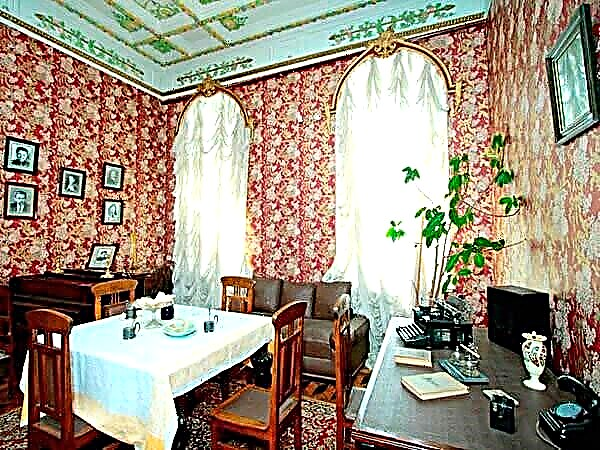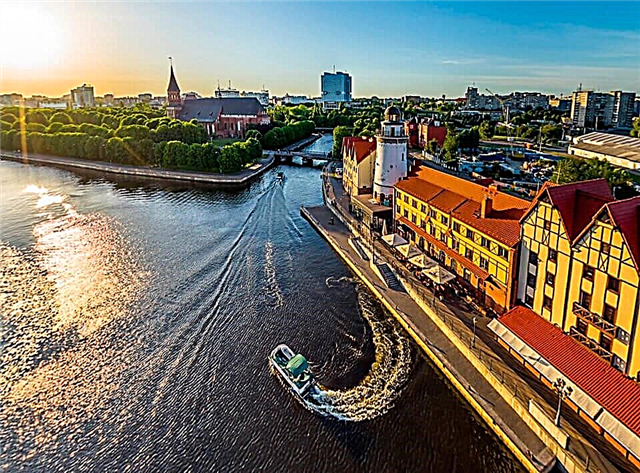Address: Russia, Nizhny Novgorod Region, Nizhny Novgorod, Gorky Street, 177A
Start of construction: 1899 year
Completion of construction: 1903 year
Architect: A.M. Kochetov
Shrines: the miraculous icon of the Martyr Paraskeva Pyatnitsa, the icon of the Most Merciful Savior, the icon of the Mother of God "The Sign", the cross from Jerusalem, particles of the relics of the Monk Seraphim of Sarov, the Monk Sergius of Radonezh, the Monks Alexei and Herman of Zosimovsky, the Monk Alexei and Herman of Zosimov, the Monk Alexei and Herman of Zosimov, the Monk Alexei of Vladimir, Saint Barlaam the Wonderworker of Moscow Sanaksarsky, righteous Alexy Bortsurmansky
Coordinates: 56 ° 19'08.5 "N 44 ° 01'28.5" E
Content:
The tradition of building churches and chapels in honor of memorable events associated with royal persons has existed in our country for a long time. The Nizhny Novgorod temple appeared fifteen years after the railway disaster of 1888, which, by a happy coincidence, bypassed the royal family. This church was built in the city in memory of the Tsar-peacemaker Alexander III. And today the Savior Church is one of the rare monuments of the city associated with the Romanov dynasty.

View of the church from Maxim Gorky street
Church history
The reason for the appearance of the temple was the miraculous rescue of the members of the royal family, which happened in 1888 during the crash of the imperial train. The train accident happened on October 17, when Alexander III and his relatives were returning from Crimea to St. Petersburg. Along the way, at a speed of about 68 km / h, 10 cars of the train descended, and only 5 cars remained intact. In total, 21 people died in the terrible crash, and many were injured.
The car in which the imperial family was traveling was completely destroyed, but the king himself, his relatives and those accompanying them did not suffer. This was regarded by many in Russia as a miracle and God's providence. Therefore, near the accident site - near the Borki station not far from Kharkov, as well as in various other parts of the country, they began to build churches in gratitude for the salvation of the sovereign.
It is known that Alexander III had with him a copy of the icon of the Savior Not Made by Hands, made from an ancient miraculous image located in Vologda. Therefore, on the initiative of the Nizhny Novgorod Duma, it was decided to build a church dedicated to the All-Merciful Savior in the city.
In order for this temple to appear, funds were needed. And to collect donations, a construction commission was created in the city. By tradition, the main sponsors of the new church were rich merchants and industrialists - the baker and financier Nikolai Alexandrovich Bugrov; Nikolay Emelyanovich Bashkirov, owner of Nizhny Novgorod mills, elevators and steamers; as well as merchants and benefactors Aristarkh Andreevich Blinov, Aleksey Maksimovich Gubin and Vasily Alekseevich Sobolev.

View of the church bell tower and the main entrance to the temple
In 1897, when the bulk of the funds had been collected, the construction commission held a design competition in which members of the Imperial Society of Architects of St. Petersburg participated. Of the 18 works presented, the citizens of Nizhny Novgorod most liked the project prepared by the famous architect and academician Alexander Mstislavovich Kochetov. He had extensive experience, and, in addition to Nizhny Novgorod, he built buildings in Kostroma, Mineralnye Vody and Sevastopol. At the turn of the 19th and 20th centuries, it was fashionable to build new churches in the pseudo-Russian style, using the architectural techniques of pre-Petrine architecture. Therefore, as a model for the future church, Kochetov chose the Church of the Life-Giving Trinity in the Moscow estate of the Sheremetyevs - Ostankino, built in the 70-80s of the 18th century.
The Nizhny Novgorod church was founded in 1899, choosing for its construction a place not far from the city prison - at the intersection of Ostrozhnaya and Spasskaya streets. At the turn of the 19th and 20th centuries, it was a newly settled suburb of Nizhny Novgorod, where there was no own parish church at that time.
The laying of churches in Russia has always been solemn and looked like great holidays. The first stones in the foundation of the future Church of the Savior were laid by Bishop Vladimir of Nizhny Novgorod and Arzamas, the governor and city head of Nizhny Novgorod, members of the construction commission who raised money for the church, as well as members of the city Duma.
The construction lasted until the autumn of 1903 and took place under the technical supervision of the academician of architecture Vladimir Petrovich Zeidler. Finally, all the bells were raised to the church bell tower, gilded crosses were installed on the domes, and the temple was consecrated.

View of the church from Belinsky street
It turned out to be quite spacious and accommodated 1,700 parishioners. In the inventory of the property of the temple, made before the revolution of 1917, it is noted that there were 8 bells in the Church of the Savior, and the largest of them weighed more than 2.5 tons. 7 bells were cast for this church by Yaroslavl craftsmen, and one bell was donated by an unknown Nizhny Novgorod citizen.
In 1912, the church was painted by masters led by the Nizhny Novgorod artist and photographer Andrei Osipovich Karelin. They made wall frescoes, taking as a model the work of famous Russian painters in the Cathedral of Christ the Savior and the Vladimir Cathedral in Kiev. And the ornamental painting was done in the neo-Byzantine style, using sketches by A. M. Kochetov.
After the coming of Soviet power, the Spassky Church remained operational for some time. In the early 1920s, it even housed the bishop's chair, which was headed at that time by Metropolitan Sergius (Starogorodsky). Then anti-religious sentiments in the state intensified, and in 1930 they tried to close the church. The city authorities made this decision after the collective appeal of citizens with a request to suspend the work of the temple. But to the members of the parish council and the rector of the church, Archpriest Fr. Nikolai (Bogolyubov) managed to challenge this resolution of the city authorities with the leadership of the All-Union Central Executive Committee in Moscow.
True, the Nizhny Novgorod authorities "recaptured" part of the basement of the Church of the Savior and began to use it for the warehouse of the city's Red Cross society. There, in the basement, lived members of the families of the church clergy - the rector of the church, his wife and their children. However, in November 1937, the temple was closed, and three of its priests were arrested.

View of the northeastern facade of the church
In subsequent years, the Nizhny Novgorod authorities developed a plan on how to remake the church premises for the city's needs. At first, they wanted to demolish the domes and the tent on the bell tower. But due to a number of coincidences this did not happen, and only the temple interiors were altered, which were adapted for the archives. This happened before the Great Patriotic War. During the war, the bell tower housed one of the points of the city air defense, and there was an anti-aircraft gun. Old-timers remember that during the bombing, explosions took place in the immediate vicinity of the temple, but he himself was never injured.
In 1947, when the attitude of the state in the Church became more loyal, a group of residents of the then Zhdanovsky district of the city asked to open the temple. But the Nizhny Novgorod city executive committee refused them, and until the mid-1960s, archives were kept inside the church.
Believers were given the opportunity to return to the temple in 1991. The Church of the Savior was consecrated again and the first divine service was held here. In recent years, large-scale restoration work has taken place here.
The architecture of the temple and its interior decoration
The Church of the Savior, thanks to the participation of several talented architects in its design and construction, turned out to be very harmonious and beautiful. It remains a successful example of stylization in the traditions of the Moscow temple architecture of the 18th century.
The red-brick church has five chapters and a tiered hipped-roof bell tower. It is richly decorated along the facades with high-quality figured brickwork in the style of Russian ornamentation. Individual decorative elements imitating white limestone are made with plaster. A new carved iconostasis has been installed inside the church, and the main altar of the temple has been fully equipped.

Church domes
The current state of the church and the visiting regime
The Orthodox Church is active and open to all comers. Services are held here daily. Three chapels have been consecrated in the church, and patronal holidays are celebrated on May 22, August 29, October 18 and December 19.
Particularly revered temple shrines are the miraculous icon of St. Paraskeva Friday, as well as the icons of Our Lady of the Sign and the All-Merciful Savior. In addition, this church contains an Orthodox cross brought from Jerusalem and particles of the relics of Christian saints.
Since 1997, a Sunday school has been operating at the Spassky Church for children of parishioners, and an Orthodox lecture hall for adult parishioners has been opened under the programs "Liturgy" and "Gospel Readings".
How to get there
The Church of the Savior is often called the temple on Poltavka. It is located in the Nizhny Novgorod district of the city, at 177A on Gorky Street (at the corner of Gorky and Trudovaya). You can get here by trams, buses and minibuses (stops Poltavskaya Ulitsa, Ulitsa Belinskogo and TD Chocolate). Or walk from the Gorkovskaya metro station (1.9 km).











